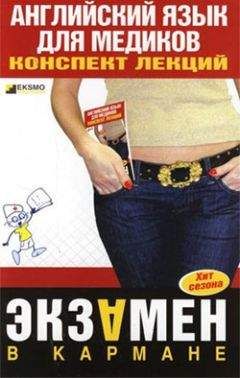It has a nucleus shaped like a curved rod or band.
Bands normally constitute 0,5-2% of peripheral WBCs; they subsequently mature into definitive neutrophils.
Agranulopoiesis is the process of lymphocyte and monocyte for mation. Lymphocytes develop from bone marrow stem cells (lympho-blasts). Cells develop in bone marrow and seed the secondary lympho-id organs (e. g., tonsils, lymph nodes, spleen). Stem cells for T cells come from bone marrow, develop in the thymus and, subsequently, seed the secondary lym phoid organs.
Promonocytes differentiate from bone marrow stem cells (mono-blasts) and multiply to give rise to monocytes.
Monocytes spend only a short period of time in the marrow before being released into the bloodstream.
Monocytes are transported in the blood but are also found in connective tissues, body cavities and organs.
Outside the blood vessel wall, they are transformed into macropha-ges of the mononuclear phagocyte system.
Thrombopoiesis, or the formation of platelets, occurs in the red bone marrow.
Megakaryoblast is a large basophilic cell that contains a U-shaped or ovoid nucleus with prominent nucleoli. It is the last cell that undergoes mitosis.
Megakaryocytes are the largest of bone marrow cells, with diameters of 50 mm or greater. They undergo 4-5 nuclear divi sions without concomitant cytoplasmic division. As a result, the megakaryocyte is a cell with polylobulated, polyploid nucleus and abundant granules in its cytoplasm. As megakaryocyte maturation proceeds, «curtains» of platelet demarcation vesicles form in the cytoplasm. These vesicles coalesce, become tubular, and eventually form platelet demarcation membranes. These membranes fuse to give rise to the membranes of the platelets.
A single megakaryocyte can shed (i. e., produce) up to 3,500 platelets.
New words
reticular – сетчатый
sinusoids – синусоиды
granulocytes – гранулоциты
agranulocytes – агранулоциты
active – активный
yellow – желтый
glycoprotein – гликопротеин
erythropoietin – эритропоэтин
large – большой
amount – количество
hemoglobin – гемоглобин
degenerating – вырождение
capable – способный
division – разделение
spherical – сферический
indented – зазубренный
condensed – сжатый
chromatin – хроматин
Запомните следующие застывшие словосочетания.
to play _ chess to play the piano to play _ football to play the guitar out of _ doors
Запомните, что перед обращением артикль опускается.
Е. g. What are you doing, _ girls?
Заполните пропуски, где необходимо.
1. Do you play… piano?
2. There is… big black piano in our living-room.
3. It is at… wall to… left of… door opposite… sideboard.
4. My mother likes to play. piano.
5. She often plays… piano in… evening.
6..boys like to play… football.
7. What do you do in… evening? – I often play… chess with my grandfather.
8. Where are… children? – Oh, they are out of… doors… weather is fine today.
9. They are playing… badminton in… yard.
10. What… games does your sister like to play?
11. She likes to play… tennis.
12. Do you like to play… guitar?
13. What… colour is your guitar?
14. When we want to write… letter, we take… piece of… paper and… pen.
15. We first write our… ad dress and… date in… right-hand corner.
16. Then on… left-hand side we write… greeting.
17. We must not forget to leave… margin on… left-hand side of… page.
18. On… envelope we write… name and address of… person who will receive it.
19. We stick… stamp on… top of right-hand corner.
20. We posted… letter.
Answer the questions.
1. What is hematopoietic tissue composed of?
2. Where is myeloid found?
3. How is red marrow characterized?
4. What does yellow bone marrow contain?
5. Where does hematopoiesis takes place in the human adult?
6. What is erythropoiesis?
7. What is myeloblast?
8. What is band neutrophil?
9. How long are megakaryocytes?
10. How many platelets can a single megakaryocyte shed?
11. Make the sentences of your own using the new words (10 sentences).
12. Find the definite and indefinite articles in the text.
Arteries are classified according to their size, the appearance of their tunica media, or their major function.
Large elastic conducting arteries include the aorta and its large branches. Unstained, they appear yellow due to their high con tent of elastin.
The tunica intima is composed of endothelium and a thin sub jacent connective tissue layer. An internal elastic membrane marks the boundary between the intima and media.
The tunica media is extremely thick in large arteries and con sists of circularly organized, fenestrated sheets of elastic tissue with interspersed smooth muscle cells. These cells are responsi ble for producing elastin and other extracellular matrix com ponents. The outermost elastin sheet is considered as the external elastic membrane, which marks the boundary between the media and the tunica adventitia.
The tunica adventitia is a longitudinally oriented collection of colla-genous bundles and delicate elastic fibers with associated fibroblasts. Large blood vessels have their own blood supply (vasa vasorum), which consists of small vessels that branch profusely in the walls of larger arteries and veins. Muscular distributing arteries are medium-sized vessels that are characterized by their predominance of circularly arranged smooth muscle cells in the media interspersed with a few elastin compo nents. Up to 40 layers of smooth muscle may occur. Both internal and external elastic limiting membranes are clearly demonstrated. The intima is thinner than that of the large arteries.
Arterioles are the smallest components of the arterial tree. Generally, any artery less than 0,5 mm in diameter is considered to be a small artery or arteriole. A subendothelial layer and the inter nal elastic membrane may be present in the largest of these vessels but are absent in the smaller ones. The media is composed of sev eral smooth muscle cell layers, and the adventitia is poorly devel oped. An external elastic membrane is absent.
New words
arteries – артерии
to be classified – классифицированный
according – соответственно
their – их
size – размер
appearance – вид
tunica – оболочка
major – главный
elastic – упругий
conducting – проведение
arteries – артерии
to include – включать
aorta – аорта
branches – ветви
up to – до
layers – слои
smooth – гладкий
may – может
Запомните следующие застывшие словосочетания.
In a loud voice In a low voice In an angry voice In a thin voice
Заполните пропуски, где необходимо.
1. She shouted in. low voice.
2. He told us the poem in. loud voice.
3. The children asked ice-cream in. thin voice.
4. The teacher cried at the pupils in. angry voice.
5. Bill Robins was… very rich man.
6. He was. richest man in. village.
7. Pete is… tallest boy in our class.
8. Nick is… shortest boy, but he is very strong.
9. He is… stronger than many boys who are taller than he.
10. I think Nick is… strongest boy in class.
Перед превосходной степенью прилагательных употребляется определенные артикль.
E. g. Asia is the largest continent.
My brother is the best pupil in his class.
Вставьте артикль, где необходимо.
1. Bill Robins was… very rich man. He was… richest man in… village.
2. Pete is… tallest boy in our class. Nick is… shortest boy, but he is very strong.
3. He is… stronger than many boys who are taller than he.
4. I think Nick is… strongest boy in class.
5. Granny often tells us… long stories. Today her story was still… longer.
6. It was… longest story. She began telling it after… dinner and finished it before… supper.
7. But… story was very interesting. I think it was… most interesting of Granny's stories.
8. Which was… most difficult exercise in. test-paper?
9. Which is… best season of the yea?
10. February is… shortest month of the year.
Answer the questions.
1. How are arteries classified?
2. What do large elastic conducting arteries include?
3. What is the tunica intima composed of?
4. What does an internal elastic membrane mark?
5. Is the tunica media thick?
6. Is the tunica adventitia a longitudinally oriented collection of col-lagenous bundles?
7. With what do the tunica adventitia associated?
8. What are muscular distributing arteries?
9. Up to how many layers of smooth muscle may occur?
10. What is the media composed of?
Make the sentences of your own using the new words (10 sentences).
Find the definite and indefinite articles in the text.
Capillaries are thin-walled, narrow-diameter, low-pressure vessels that generally permit easy diffusion across their walls. Most capillar ies have a cross-sectional diameter of 7-12 mm. They are composed of a simple layer of endothelium, which is the lining of the entire vas cu-lar system, and an underlying basal lamina. They are attached to the surrounding tissues by a delicate reticulum of collagen. Associated with these vessels at various points along their length are specialized cells called pericytes. These cells, enclosed within their own basal lamina, which is continuous with that of the endothelium, contain contractile proteins and thus may be involved in the control of capillary dynamics. They may also serve as stem cells at times of vascular repair. Capillaries are generally divided into three types, according to the structure of their endothelial cell walls.
Continuous (muscular, somatic) capillaries are formed by a single uninterrupted layer of endothelial cells rolled up into the shape of a tube and can be found in locations such as connective tissue, muscle, and nerve.
Fenestrated (visceral) capillaries are characterized by the presence of pores in the endothelial cell wall. The pores are covered by a thin diaphragm (except in the glomeruli of the kidney) and are usually encountered in tissues where rapid substance interchange occurs (e. g., kidney, intestine, endocrine glands).
Sinusoidal capillaries can be found in the liver, hematopoietic and lymphopoietic organs, and in certain endocrine glands. These tubes with discontinuous endothelial walls have a larger diame ter than other capillaries (up to 40 mm), exhibit irregular cross-sec tional profiles, have more tortuous paths, and often lack a con tinuous basal lamina. Cells with phagocytic activity (macrophages) are present within, or just subjacent to, the endothelium.
New words
capillaries – капилляры
to thin-walled – окруженный тонкой стеной
narrow-diameter – узкий диаметр
low-pressure – низкое давление
that – тот
generally – главным образом
permit – разрешение
easy – легкий
diffusion – распространение
cross-sectional – поперечный
to be composed – быть составленным
simple – простой
endothelium – эндотелий
lining – выравнивание
entire – весь
vas cular – сосудистый
underlying – лежащий в основе
basal – основной
lamina – тонкая пластинка
Правила употребления артикля с географическими названиями.
Определенный артикль употребляется перед названиями рек, каналов, морей, заливов, проливов, океанов, архипелагов, горных цепей.
Артикль не употребляется перед названиям озер, гор, островов, континентов, городов, стран. Исключения:
the United States of America
the United Kingdom of Great Britain and Northern Ireland the Netherlands the Ukraine the Crimea the Congo
Answer the questions.
1. Describe capillaries: how do they like?
2. What diameter do the most capillaries have?
3. What are the capillaries composed of?
4. Where are the capillaries attached to?
5. What are pericytes?
6. What do pericytes contain?
7. Where can pericytes be involved?
8. Where can sinusoidal capillaries be found?
9. What diameter have sinusoidal capillaries?
10. With help of what are continuous (muscular, somatic) capillaries formed by?
Make the sentences of your own using the new words (10 sentences).
Find the definite and indefinite articles in the text.
Veins are low-pressure vessels that have larger lumina and thinner walls than arteries. In general, veins have more collagenous connec ti-ve tissue and less muscle and elastic tissue than their arterial coun ter-parts. Although the walls of veins usually exhibit the three layers, they are much less distinct than those of the arter ies. Unlike arteries, veins contain one-way valves composed of exten sions of the intima that prevent reflux of blood away from the heart. Veins can be divided into small veins or venules, medium veins, and large veins.
Venules are the smallest veins, ranging in diameter from approxi mately 15-20 mm (post-capillary venules) up to 1-2 mm (small veins). The walls of the smaller of these are structurally and func tio-nally like those of the capillaries; they consist of an endothelium surrounded by delicate collagen fibers and some pericytes. In those vessels of increased diameter, circularly arranged smooth muscle cells occur surrounding the intima layer, but unlike in the small arteries, these cells are loosely woven and widely spaced. Venules are important in inflammation because their endothelial cells are sensitive to his-tamine released by local mast cells. This causes endothelial cells to contract and separate from each other, exposing a naked basement membrane. Neutrophils stick to the exposed collagen and extravasate (i. e., move out into the connective tissue). Histamine also causes local arterioles to relax, affect ing a rise in venous pressure and increased leaking of fluid. This produces the classic signs of inflammation: redness, heat, and swelling.





![Rick Page - Make Winning a Habit [с таблицами]](https://cdn.my-library.info/books/no-image-mybooks-club.jpg)